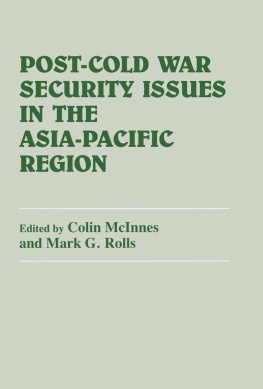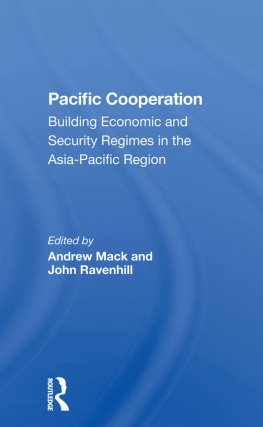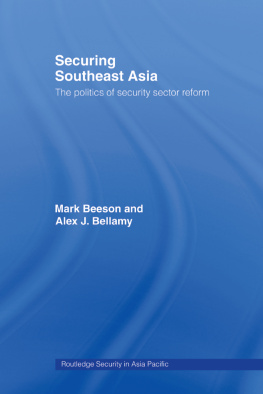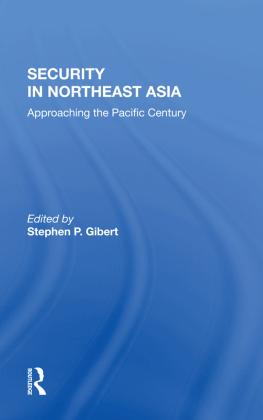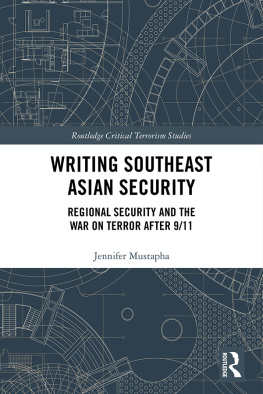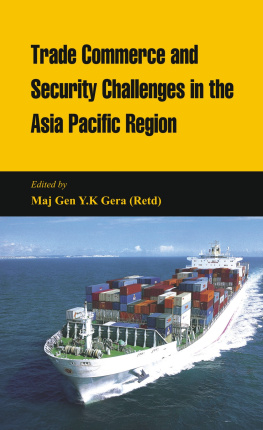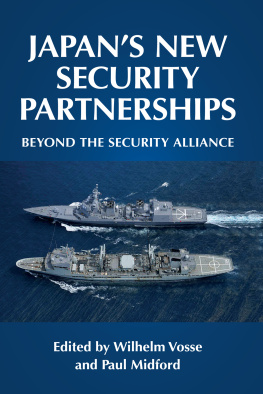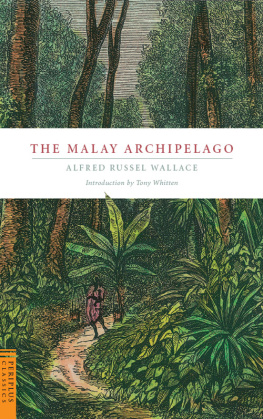N OTES
C HAPTER 1
(accessed on June 12, 2009).
. See, for instance, Andrew T H Tan, Security Perspectives of the Malay Archipelago: Security Linkages in the Second Front in the War on Terrorism (Cheltenham: Edward Elgar, 2004), 1939.
. The term radical Islamists refers to those who subscribe to radical, violent interpretations of jihad or holy war. It does not refer to the Islamic religion or to the overwhelming majority of Muslims. It also does not refer to fundamentalist Islamists who espouse an Islamic state but believe this can and should be realized through peaceful means and the electoral process. Islamist parties include the Partai Islam (PAS) in Malaysia and the Partai Keadilan Sejahtera (Justice Prosperous Party or PKS) in Indonesia.
. For an in-depth analysis of Al Qaedas objectives and worldwide operations, see Rohan Gunaratna, Inside Al Qaeda (London: Hurst, 2002).
. For a detailed discussion of Al Qaedas operations and activities in the region, see ibid., 174203.
.
, (accessed on February 10, 2010).
. Straits Times (January 12, 2002): 1.
(accessed on August 26, 2009).
(accessed on April 5, 2010).
. See Desmond Ball, Arms Modernization in Asia: An Emerging Complex Arms Race, in The Global Arms Trade, ed. Andrew T H Tan (London: Routledge, 2009), 3051.
. Robert Jervis, Perception and Misperception in International Politics (Princeton, NJ: Princeton University Press, 1978), 58113.
. Barry Buzan, People, States and Fear: The National Security Problem in International Relations (Hampstead: Wheatsheaf, 1990), 190.
. Ibid., 19093.
. Barry Buzan, The Southeast Asian Security Complex,Contemporary Southeast Asia (June 1988): 314.
. Muthiah Alagappa, Dynamics of International Security in Southeast Asia: Change and Continuity, Australian Journal of International Affairs 45, no. 1 (May 1991): 1722.
.
. See Tim Huxley, Defending the Lion City: The Armed Forces of Singapore (Sydney: Allen and Unwin, 2000).
. Alagappa, Dynamics of International Security in Southeast Asia: Change and Continuity, 17.
. Huxley, Defending the Lion City, 4041.
. Richard Stubbs, Subregional Security Cooperation in ASEAN: Military and Economic Imperatives and Political Obstacles, in Asian Survey 32 (1992): 397405.
. Donald K. Emmerson, Indonesia, Malaysia and Singapore: A Regional Security Core? in Southeast Asian Security in the New Millennium, ed. Richard J. Ellings and Sheldon W. Simon, (New York: Armonk, 1996), 4052.
(accessed on March 1, 2010).
(accessed on March 1, 2010).
. Andrew T H Tan, A Political and Economic Dictionary of South-East Asia (London: Europa, 2004), 4344.
. For a study of interstate tensions in Southeast Asia, see Andrew T H Tan, Intra-ASEAN Tensions (London: Royal Institute of International Affairs, 2000).
. For a study of the FPDA, see Andrew T H Tan, The Five Power Defence Arrangements, Contemporary Security Policy (August 2008), 285302.
. See Tim Huxley, Singapore and Malaysia: A Precarious Balance? Pacific Review 4, no. 3 (1991): 20413.
Relations of Southeast Asia (Oxford: Oxford University Press, 2000); and Constructing a Security Community in Southeast Asia (London: Routledge, 2001 and 2009).
. See, for instance, David Martin Jones and Michael L. R. Smith, ASEAN and East Asian International Relations: Regional Delusions (Cheltenham: Edward Elgar, 2006). The same authors also wrote Making Process, Not Progress: ASEAN and the Evolving East Asian Regional Order, International Security 32, no. 1 (Summer 2007): 14884.
. See Andrew T H Tan, Security Perspectives of the Malay Archipelago (Cheltenham: Edward Elgar, 2004).
. See Rohan Gunaratna, Inside Al Qaeda (London: Hurst, 2002), 174203.
. See Zachary Abuza, Militant Islam in Southeast Asia: Crucible of Terror (Boulder, CO: Lynne Rienner, 2003).
. Maria A. Reesa, Seeds of Terror, An Eyewitness Account of Al-Qaedas Newest Center of Operations in Southeast Asia (New York: Free Press, 2003).
.
. Rommel Banlaoi, War on Terrorism in Southeast Asia in 2004 (Manila: Rex, 2004).
. See Andrew T H Tan, ed., A Handbook of Terrorism and Insurgency in Southeast Asia (Cheltenham: Edward Elgar, 2007).
. See Rommel Banlaoi, Counter Terrorism Measures in Southeast Asia: How Effective Are They? (Manila: Yuchengco Center, De La Salle University, 2009); and Peter Chalk, Angel Rabasa, William Rosenau, and Leanne Piggott, The Evolving Terrorist Threat to Southeast Asia: A Net Assessment (Santa Monica: Rand, 2009).
.
. See, for instance, Rohan Gunaratna, Arabinda Acharya, and Sabrina Chua, Conflict and Terrorism in Southern Thailand (Singapore: Marshal Cavendish, 2005); Rethinking Thailands Southern Violence, ed. Duncan McCargo (Singapore: NUS Press, 2007); Zachary Abuza, Balik-Terrorism: The Return of the Abu Sayaff (Carlisle: US Army War College, 2005); and the contributions by Paul Rodell, Kamarulzaman Askandar, and Thitinan Pondsudhirak, in A Handbook of Terrorism and Insurgency in Southeast Asia, ed. Andrew T H Tan (Cheltenham: Edward Elgar, 2007).
.
ed. Swati Parashar (Delhi: Dorling Kindersley, 2008); Strategic Manoeuvres: Security in the Asia-Pacific, ed. James Veitch (Wellington: Victoria University of Wellington, 2009); and Maritime Security in Southeast Asia, ed. Kwa Chong Guan and John K Skogen (Oxford: Routledge, 2007).
. See Asian Energy Security: Regional Cooperation in the Malacca Strait, ed. Andrew Forbes (Canberra: Sea Power Centre, 2008); and Maritime Capacity Building in the Asia-Pacific Region, ed. Andrew Forbes (Canberra: Sea Power Centre, 2010).
(accessed on May1, 2010).
.
. Desmond Ball, Arms Modernization in Asia: An Emerging Complex Arms Race, in The Global Arms Trade, ed. Andrew T H Tan (London: Routledge, 2009), 3051. See also Tim Huxley, Singapore and Malaysia: A Precarious Balance? Pacific Review 4, no. 3 (1991): 20413; N. Ganesan, Bilateral Tensions among the ASEAN States (Singapore: Institute of Southeast Asian Studies, 2000); and Andrew T H Tan, Security Perspectives of the Malay Archipelago (Cheltenham: Edward Elgar, 2004).
. The evolution of U.S. counterinsurgency and counterterrorism strategy since 9-11, including the lessons from the Malay archipelago, is more comprehensively detailed in Andrew T H Tan, US Strategy against Global Terrorism: How It Evolved, Why It Failed and Where It Is Headed (New York: Palgrave Macmillan, 2009).
C HAPTER 2
(accessed on March 1, 2010).
. Andrew T H Tan, Terrorism and Insurgency in Southeast Asia, in A Handbook of Terrorism and Insurgency in Southeast Asia, ed. Andrew T H Tan (Cheltenham: Edward Elgar, 2007), 5.
. For a summary of 9-11, see Andrew T H Tan, ed., The Politics of Terrorism (London: Routledge, 2006), 21112.
. For a concise summary of the new terrorism, see Bruce Hoffman, The New Terrorism, in The New Terrorism: Anatomy, Trends and Counter-Strategies, ed. Andrew T H Tan and Kumar Ramakrishna (Singapore: Eastern Universities Press, 2002), 3049.
. Rohan Gunaratna, Inside Al Qaeda (London: Hurst, 2002), 221.
(accessed on March 1, 2010).
(accessed on March 1, 2010).
(accessed on March 1, 2010).
(accessed on March 1, 2010).
(accessed on April 15, 2010).
. National Strategy for Combating Terrorism, February 2003, http://www.globalsecurity.org/security/library/policy/national/counter_


